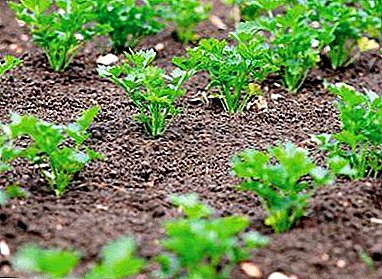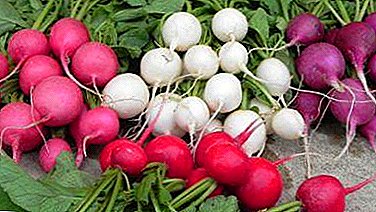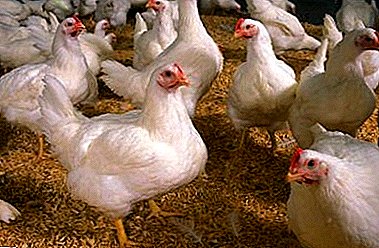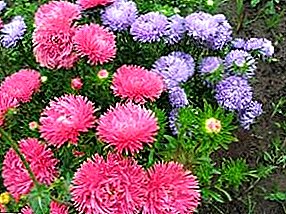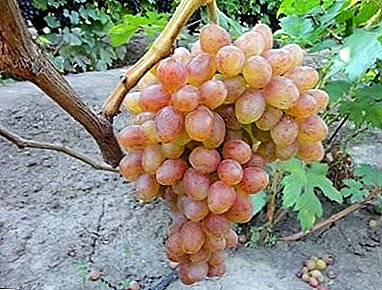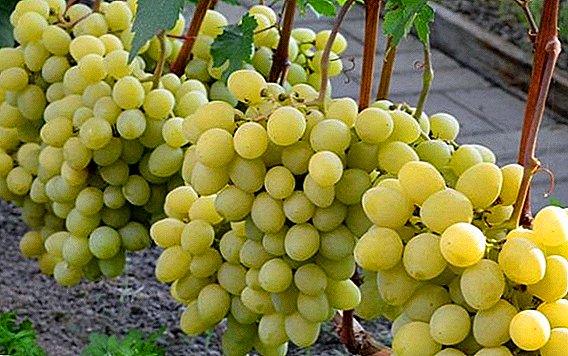 Probably there are few people who are indifferent to grapes.
Probably there are few people who are indifferent to grapes.
Its appearance, delicate taste and wonderful aroma cannot help but seduce.
But among the variety of grape varieties, the Valek variety occupies a special place.
We will tell about it.
A bit of history
"Valek" was bred by a Ukrainian wine grower, a resident of Kirovograd region, amateur breeder, Nikolai Pavlovich Vishnevetsky. He crossed three grape varieties - Kesh, Zvezdny and Rizamat. 
Due to this, a new variety, unique in its characteristics, emerged, which quickly gained popularity and became widespread not only in Ukraine, but also in Russia.
Biological description
This variety has characteristic features by which it is possible to distinguish the "Valek" from many other varieties.
Familiarize yourself with the cultivation of such popular grape varieties as "Malbec", "Furor", "Zilga", "Kishmish radiant", "Romeo", "Alpha", "Zest", "Rusbol", "Long-awaited", "Red" , "Value".
Bushes and shoots
The bushes are characterized by a large growth force and good ripening of young shoots along the entire length; from one to three clusters are formed on each shoot. The vines are flexible and powerful.
Flowers bisexual, not requiring bee pollinating. The leaves are medium sized, rich in green, with a slight pubescence below. 
Clusters and berries
Brushes - large in size, have a dense structure. Weigh from one and a half to two kilograms.
The grapes are bright yellow, large, oval, 2.5 to 3 centimeters long and 1.5 to 2 centimeters wide. Grape weight 13-15 g, can be found, and 25-30 g. The rind is thick, but thin, and therefore not felt when chewing. The flesh is soft, fleshy and juicy, the sugar content of the juice is 17-18%.
Full ripeness of the berries comes with the appearance on the skin of a golden hue. The taste is sweet berry, with a barely noticeable aftertaste of nutmeg and pear.
Did you know? Great success in the cultivation of grapes reached the ancient Greeks: over 2000 years before our era, they brought new varieties, inoculated and used fertilizers.

Specifications Grade
Along with the taste, this variety is also appreciated for its high technical characteristics.
Cold hardiness and disease resistance
Carries frost up to 24 degrees below zero. The variety is not very susceptible to gray rot (there are very few cases of diseases) and autumn fungal diseases, he is not afraid of downy powdery mildew and powdery mildew.
But at the same time, it is subject to the harmful effects of wasps, who like this grape variety as a source of food.
Ripening and Yield
This variety belongs to the early maturing, but high-yielding varieties. On the second or third season after planting will give the first harvest. 
"Valek" ripens on day 105 since the beginning of the growing season. In its historic homeland, the harvest season begins in the second half of July, 35-40 kg of fruit is harvested from one bush.
Transportability and storage
Transportation is good. The main thing is that the cuttings are whole and healthy looking.
Application
The main purpose of the "Valek" berries is fresh consumption, but the wine from this grape is also very good. Good jam comes out of this grape, and compote will not leave you indifferent.
Learn how to make jam from grapes, as well as how to make raisins, wine, grape juice and champagne from grape leaves.
How to choose high-quality and healthy seedlings when buying
Without a good seedling and the harvest will not be good. Of course, the place of purchase of a sapling does not play a decisive role, but still it is better to purchase it in a store or from a neighbor in a country plot or a cottage.
Did you know? For the production of one bottle of wine you need 600 grapes.The store will give at least a minimum guarantee of quality, and the neighbors saplings have grown on similar soil.

But be that as it may, when choosing a seedling special attention should be paid to its appearance.
Stalk:
- exclusively with their own, and not grafted roots;
- no pronounced traces of drying;
- lack of fungal spots;
- the presence of two or three roots.
Learn how to prepare cuttings in autumn, how to prepare and store cuttings of grapes in winter, how to plant cuttings of grapes in autumn.Seedling:
- grown shoot height of 40-50 cm;
- the roots must be white;
- the top cut is green.
If the seedling with the above is OK, you can take it. 
Where to plant on the site
When choosing a landing site, the following requirements should be considered:
- The place should be open and well lit.
- Eliminate shading by other plants - both already growing and those that will be planted next.
- The place should be on a hill, on the south or southwest slope.
- Deep occurrence of groundwater.
- The soil should be light, well permeable to excess moisture.
- The site is protected from winds (natural barriers, buildings, fences).
- Adequate space for lighting and growth.
Important! The most favorable soil for the variety "Outrigger" - weak loam containing some black soil.

Landing rules and secrets
Planting grapes can be a very long process, from the end of March to the beginning of November - everything determines the method of planting.
Planting sleeping seedlings or grafting cuttings should be done better in early spring, while growing seedlings with green shoots and leaves are recommended to be planted in late spring when the heat has already settled.
In the fall, planting features consist in the fact that it should be done only during the period when the plant goes into a calm state and always before the winter frost, in other words, in the middle of October.
Experts give the following recommendations:
- between the bushes of grapes of the same row - approximately 3 m;
- between the rows of vines - about 4 m;
- planting cuttings - until the beginning of summer.

The most important thing is the preparation of the pit. It should be a depth of at least 0.8 m and the same width. The bottom of the pit on the third filled with gravel or rubble, level. Then, the removed topsoil is laid in the prepared pit, then two or three compost buckets are laid.
It does not hurt to add mineral fertilizers, superphosphate (2 tbsp. Spoons) and shovels ash. And all this should be left for two or three weeks.
Learn how to plant your own grapes, how to plant grapes in the fall and spring.
At the right time, the seedling, harvested and aged in water for maximum saturation with moisture, is lowered into the pit along the root neck (the neck itself is not buried) and carefully poured over with soil, at the same time compacting the ground.
It is necessary to ensure that right near the roots there is no empty space with air left - otherwise they will quickly dry out.
After planting, pour the seedling with two or three buckets of water, bind to the support, and mulch the soil. 
Important! Planting a variety of grapes nearby is not recommended - the plants will pereopily and mutually lose their qualities.
Seasonal care features
For the harvest to be rich and tasty, and care must be of high quality. In principle, the care of the variety "Valek" is almost no different from the care of other grape varieties, but there are some peculiarities.
Watering
Moderate soil moisture is the main condition for good grape growth. It should be watered a maximum of three times per season, but in dry weather - you can even once. Be sure to water before flowering and during the formation of grapes.
It is very important not to wet the leaves and shoots - humidity favors the reproduction of fungal spores. Under each bush you need to pour one or two buckets of water. And one more prerequisite - drainage for the removal of excess moisture. 
Support
Props are needed for grapes to curl. To ensure good ventilation and future convenience in the processing and collection of grapes, supports should be installed in a row at a distance of 80 cm -1 m, and between rows at least one meter.
Soil care
Here it is necessary to adhere to certain rules of agricultural engineering:
- Regular weeding between rows and around grape bushes. Weeds take away moisture and useful substances from grapes. Weeding is done in the spring after the land dries up and always before bud break. The soil is ready for weeding if it does not stick to the spade.
- Loosening the soil completely throughout the plot where the grapes are planted. In the spring, the soil should be loosened shallowly - by 15 centimeters, not more, it will help to preserve the moisture that has accumulated over the winter. Over the summer, loosening should be carried out six to seven times. This contributes to the destruction of weeds and the destruction of the crust being created, due to which the soil on the site can dry out. Autumn digging is carried out immediately after harvest. Its goal is to create in the soil the largest possible supply of moisture and nutrients. The earth is dug up with a bayonet spade, while the inverted layers of the earth are not broken, but left until spring. This is done in order to delay and accumulate precipitation. Also for this purpose around the bush make a hole with a diameter of about 35 cm and a depth of 15 cm.
- Mulching. Or cover the ground with moss, straw or sawdust is made immediately after watering. The goal of this process is to maximize moisture retention.

Did you know? In Russia, the first vineyard appeared at the beginning of the 17th century in Astrakhan, which at that time was a major center of merchants.
Pinching and trimming
The purpose of pinching is to limit the growth of grape bushes. If this is not done, then the grapes will grow uncontrollably. Pinching is done before flowering - this will provide better access to nutrients to the inflorescences.
Pinching grapes: video
But the purpose of pruning shoots and vines of grapes, in addition to limiting their growth, is to improve the ventilation of the grape bush. Cut the largest leaves covering clusters from the sun. It is recommended to do pruning in early spring or autumn.
Learn how to properly prune grapes in autumn, spring, summer.
But keep in mind that all leaves should not be removed, enough to cut from three to five of the largest.
Top dressing
It needs to be produced after the end of the harvest, when all the brushes have already been removed. A trench is dug 40-60 cm in depth along the vineyard and then useful formulations are placed in it.
In the spring, for growth, green mass is fed with mineral nitrogen fertilizers, and in summer - granulated nitrogen and phosphate fertilizers to accelerate the ripening of berries.
Every two years in the fall they are fertilized with organic matter at the rate of 1 sq. M. m grapes 10 kg of organic matter and 100 g of absolutely pure wood ash. 
Cold protection
"Valek" is susceptible to cold and frost. On the eve of the onset of cold weather, it must be covered. Experienced gardeners do it this way: the vines are removed from the supports and neatly laid on the ground; then metal arcs are placed over them and they stretch the polyethylene film.
If such protection is impossible to do - simply powdered with earth. After the retreat of the cold vines reveal.
Careful care and caring attitude to the grapes "Valek" will surely turn into a good harvest of delicious sugar berries with an unusual and delicate taste and smell.
Feedback from network users





